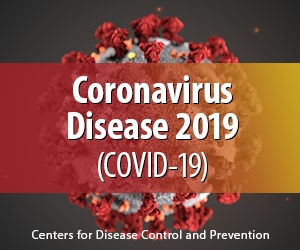
(NEW YORK) -- The City Council in Long Beach, California, voted Tuesday to ratify a local public health emergency order after an outbreak of tuberculosis sickened several people.
The outbreak is linked to a single-room occupancy hotel, a form of affordable housing meant for low- or minimal income residents, according to the city's public information office.
As of April 29, 14 cases have been confirmed and approximately 170 people have likely been exposed.
Nine have been hospitalized and one person has died.
Here is everything you need to know about TB, including how it spreads, what are the symptoms and how to prevent infection:
What is TB?
Tuberculosis (TB) is caused by the bacterium Mycobacterium tuberculosis, according to the Centers for Disease Control and Prevention.
The bacteria typically attack the lungs but can also attack other parts of the body including kidneys, spine and brain.
Not everyone infected with TB bacteria becomes sick, resulting in two TB-related conditions: latent TB infection and TB disease.
People with latent TB infections will usually test positive for TB via a skin test or blood test but will not feel sick or have symptoms and will not spread TB bacteria to others.
Meanwhile, those with TB disease fall sick often have symptoms including chest pain, coughing up blood, fatigue, weakness, fever, chills, sweating, lack of appetite and weight loss, the CDC said. Additionally, someone with TB disease can spread the bacteria to others.
How does TB spread?
When a person with TB disease coughs, sneezes, speaks or sings, bacteria can spread through the air and a non-infected patient can breathe in the bacteria. These bacteria can settle in the lungs and then move throughout the body.
The disease is not spread by shaking hands, sharing food or drinks, touching clothes, touching bed linens, sharing toothbrushes or kissing, according to the CDC.
The CDC said people with TB disease are most likely to spread the illness to close contacts including family, friends, coworkers and classmates.
Those who are exposed to TB bacteria but not infected cannot immediately spread the disease to people; only people with active disease can do so, according to the CDC.
"Before you would be able to spread TB to others, you would have to breathe in TB bacteria and become infected," the CDC says on its website. "Then the active bacteria would have to multiply in your body and cause active TB disease. At this point, you could possibly spread TB bacteria to others."
What treatments are available for TB?
There are several treatment regimens for TB disease that may last anywhere from four months to nine months depending on the course of treatment. Health care providers may consider specific regimens for patients with co-existing medical conditions such as diabetes or HIV.
Those with latent TB infections, should consult a health care provider for a specific treatment regimen.
About 5% to 10% of people who don't receive treatment for latent TB infection will develop TB disease at some point, according to the CDC.
How to prevent TB
In the U.S., the TB vaccine exists, but it is only for people who meet specific criteria, and should be given in consultation with a TB expert, according to the CDC.
In other countries where TB is common, the vaccine is often given to infants and small children.
The CDC recommends that Americans who visit other countries where TB is more common should avoid close contact or prolonged time with known TB patients in crowded, enclosed environments, and to have a TB skin or blood test upon return to the U.S.
What is the latest on the outbreak in California?
Long Beach City Health Officer Dr. Anissa Davis declared a local public health emergency last week before it was ratified by the City Council on Tuesday.
This allows the city to mobilize resources, accelerate emergency plans, coordinate with other agencies and allow the city to expedite the purchase of necessarily supplies to identify and treat TB.
Long Beach public health officials, however, say the risk of TB for people who live, work, study or visit in Long Beach remains very low.
In 2022, there were 8,331 TB cases reported in the U.S., an increase from 2021 but lower than 2019, CDC data shows. There were 602 deaths in 2021, the latest date for which data is available.
Copyright © 2024, ABC Audio. All rights reserved.





















